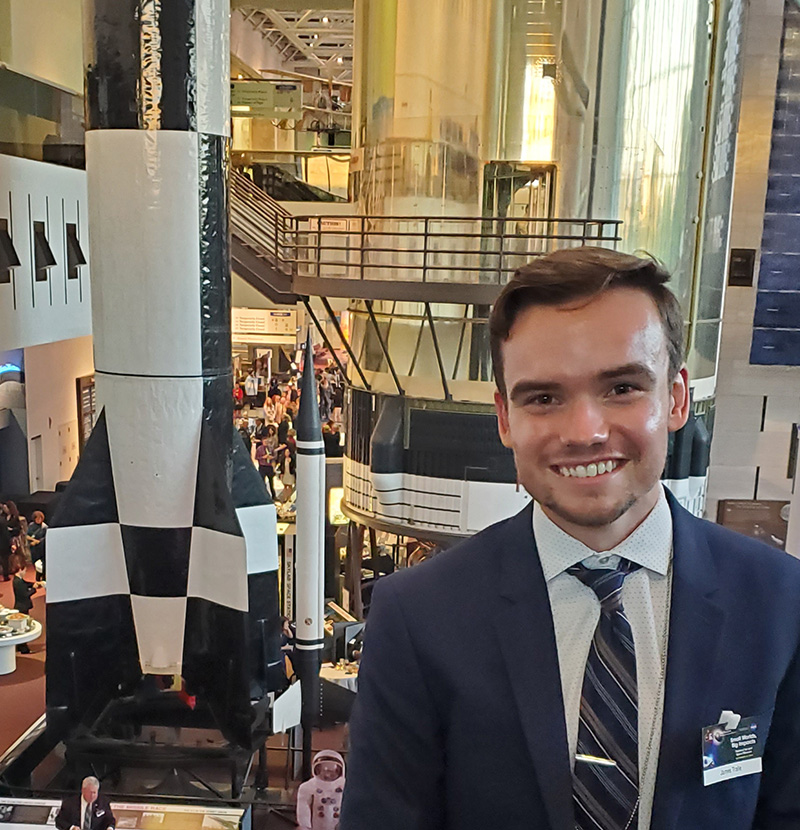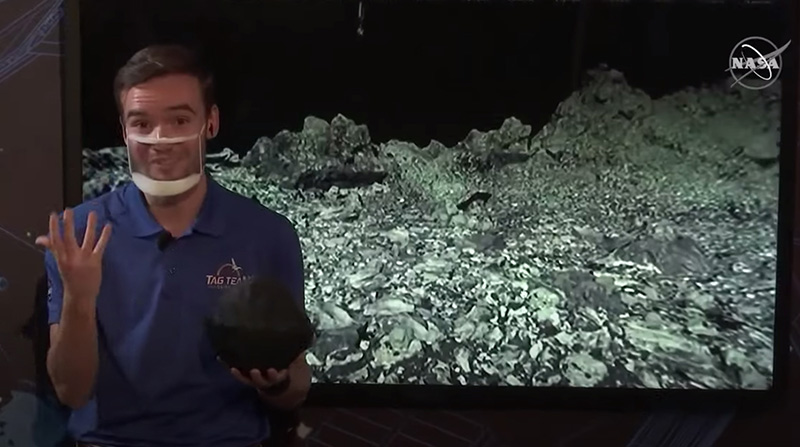
James Tralie
Planetary Science Producer and Animator - NASA's Goddard Space Flight Center
Upper Dublin High School, Fort Washington, Pennsylvania
Princeton University
Geosciences
Looking through my dad's telescope in the backyard at Jupiter and Saturn. Seeing the rings of Saturn through the viewfinder really took my breath away and made me think deeply about our place in the solar system. Once I got my first camera, I became obsessed with astrophotography and with capturing the Milky Way looming above the surrounding landscape.
I studied geosciences at Princeton. I also continued developing my skills in film and animation. During my undergraduate research, I worked to merge the arts into my projects. I three-dimensionally mapped the genesis of tropical cyclones in the East Pacific. I used digital single-lens reflex cameras to analyze tidal patterns off the coast of northern Spain, and I imaged the mantle below the Cape Verde islands using seismograms.
I wanted to continue scientific research, but I wanted to keep a strong artistic component to the work I create. I was able to join the production team at NASA’s Goddard Space Flight Center. At Goddard, I get to combine my scientific knowledge with my creative skills to create videos, animations, and visualizations that explain discoveries made by our planetary missions to the public.
I work directly with the scientists and engineers on all the planetary science missions to explain their results to the public through engaging content. I create anything from 360 videos about the surface of asteroid Bennu, to comic book-style animations about charged particles in the ionosphere of Mars, to documentaries on training astronauts for geological research on the Moon. I am always looking for new ways to communicate science to the public. I incorporate more interactive experiences into the content I develop for NASA.
Never give up on your passions. Find something you truly love and work to develop it into a career. There are so many different roles at NASA, and truly anyone can find a place here. We all have one thing in common – a love for space and exploration.
I really enjoyed the Origins, Spectral Interpretation, Resource Identification, Security-Regolith Explorer (OSIRIS-REx) mission. It was incredible to think about all the planning that went into the mission to sample an asteroid 200 million miles away from Earth (and the spacecraft steered itself to the surface using onboard software!).

The spacecraft imaged the surface in unprecedented detail, which gave us on the communications side of things so much content to work with to develop our video and animation products. I was able to work with our team of visualizers to develop a 360 video that places the viewer on the surface of the asteroid as OSIRIS-REx swoops in to TAG (Touch-and-Go) the sample site, Nightingale. I was able to develop several augmented reality (AR) filters for the mission on Instagram. I also had the chance to work with the WNBA on a collaborative project about the preparation that goes into major events like a championship game or a sample collection on an asteroid!
In college, I acted in a French theater group (L'Avant-Scène). I played baseball growing up, and it was always a dream of mine to either be a professional player or a pilot on an SR-71 Blackbird. In my free time, I like to create 3D renders of relaxing environments.
Planetary science is a global profession.

